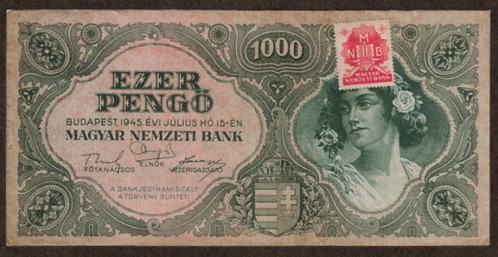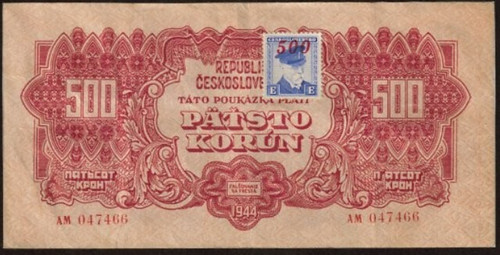
PREV ARTICLE
NEXT ARTICLE
FULL ISSUE
PREV FULL ISSUE
THE SIGNIFICANCE OF STAMPS USED ON BANK NOTES
This week's Featured Web Site is John Sandrock's The Currency Collector. Kavan Ratnatunga suggested the site, and he also pointed
out this nice article by Sandrock and Arnold Keller on the significance of stamps used on bank notes. Here's a short excerpt - be
sure to read the complete article online. -Editor
As your collection grows in size it is not long before you run across a bank note or two with an adhesive stamp affixed to its surface. Since these notes are not too scarce - indeed some varieties are relatively common - every collector may expect sooner or later to acquire examples for his collection. Therefore, it may be of interest to explore the significance of these stamps. Immediately our attention is drawn to the fact that stamp-notes came into issue for a variety of purposes. The most numerous of these notes are those which bear stamps indicating value. Perhaps the stamp bearing notes most widely known and collected today are those issued by Hungary in 1945. Three varieties of these notes exist: the 1,000 pengo with red stamp affixed, and 10,000 pengo notes with brown or blue stamps affixed to their obverse. These stamps were added to notes in circulation to increase their value. This move was made as an anti-inflation measure. The owners of the notes were required to pay ¾ of their value and in return received an appropriate stamp to signify this. As an economic move this measure was doomed to failure - the inflation running on to the astronomical ratio of one old pengo to 1,000,000,000,000,000 new ones! This costly experiment has left to the field of paper money collectors some of our most interesting specimens. 
Almost equally well known are the stamp-notes used in Czechoslovakia after World War II. These notes are of two principal varieties and had their stamps affixed for entirely different reasons. The first of these notes were printed in Russia and were brought into the country for the use of the Russian Army. Records ascertaining the amount of these notes issued were improperly kept and it became necessary to count the notes to determine the quantity then circulating. To accomplish this, each note counted received a stamp. Those circulating without stamps continued to be counted while stamp-bearing notes were not counted again. Only notes in the denomination of 100, 500 and 1000 korun were counted. We find on the 100 korun note a blue control stamp picturing the Czechoslovakian statesman Masaryk with a block letter “E” in its lower corners. The stamp itself is overprinted “100” in black ink. On the 500 korun note we find the same stamp with a red “500” overprint, and on the 1000 korun denomination the “1000” overprint is also in red. The other variety of stamp-notes used in Czechoslovakia were the former issues of Slovakia, counted and stamped for the same purpose. After World War II, Czechoslovakia, being recreated as it were, had no bank note issues of its own. As an emergency expedient the Russian occupation notes mentioned above and the notes of the former state of Slovakia were allowed to circulate side by side until they could be replaced with a post-war issue. When being counted, the Slovakian notes received their own stamps. 
To read the complete article, see:

Wayne Homren, Editor The Numismatic Bibliomania Society is a non-profit organization promoting numismatic literature. See our web site at coinbooks.org. To submit items for publication in The E-Sylum, write to the Editor at this address: whomren@gmail.com To subscribe go to: https://my.binhost.com/lists/listinfo/esylum All Rights Reserved. NBS Home Page Contact the NBS webmaster 
|